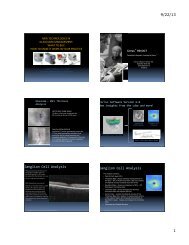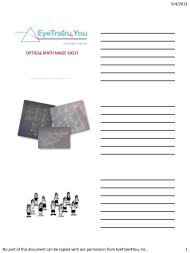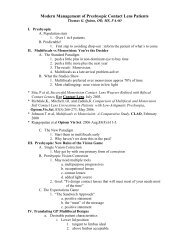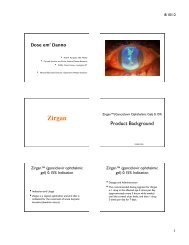Create successful ePaper yourself
Turn your PDF publications into a flip-book with our unique Google optimized e-Paper software.
Soft Lens History and Outcome• First lens manufacturing circa 1965 – 1970• Spin casting• Diamond turning on single axis lathesBoth resulted in lenses that were either monocurveor bi-curve as extensions of rigid corneal lensdesign• Discovery that base curve radius had to be muchflatter than the keratometry valuesUse of base curve radius to control sagittal depthFlaw of Use of Base Curve Radius• Lens required to “drape” central cornea whilerequiring either circumferential stretching oversclera or causing scleral indentation= Lens Deformation• Lens deformation causes loss of optical integrity• Limits the ability to correct higher order aberrations• Limits simultaneous multifocal performance• <strong>Scleral</strong> indentation causes variable lens comfort• One size fits all results in variable indentation orcompression from eye to eye• Has impact on end of the day comfortNeed – Shift Control of Sag to thePeriphery of the LensApply same logic and design concepts tosoft lenses as used in scleral lens• Select base curve close to the central keratometry valueto avoid draping and random deformation• Select the overall diameter from the corneal diameter(HVID) to have equivalent extension from limbus on alleyes• Control the sag by Landing Zone Angles• Apply convex to the eye geometry in the landing zoneT H A N K Y O U12











